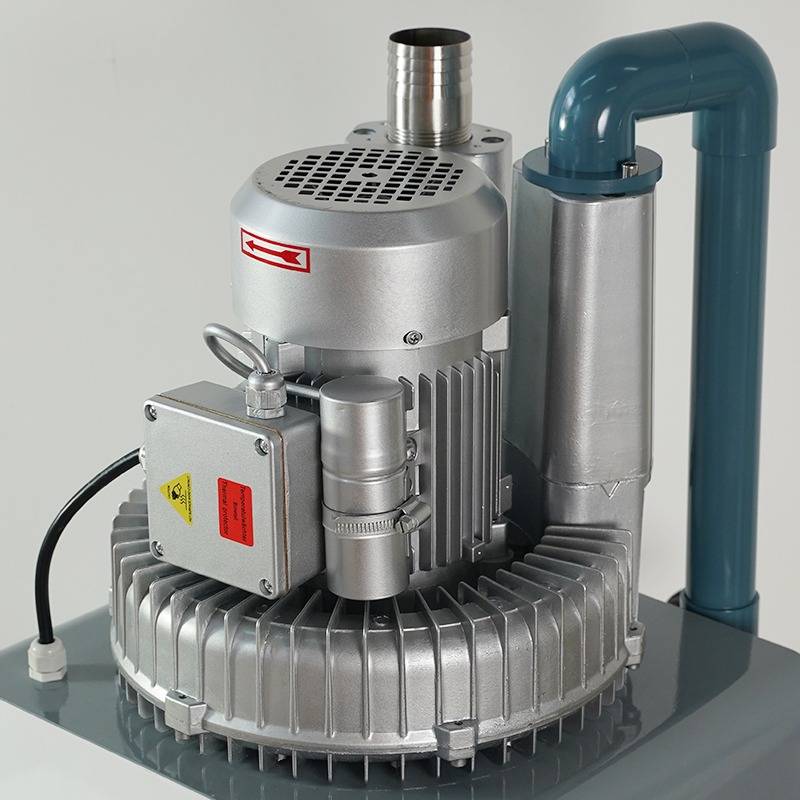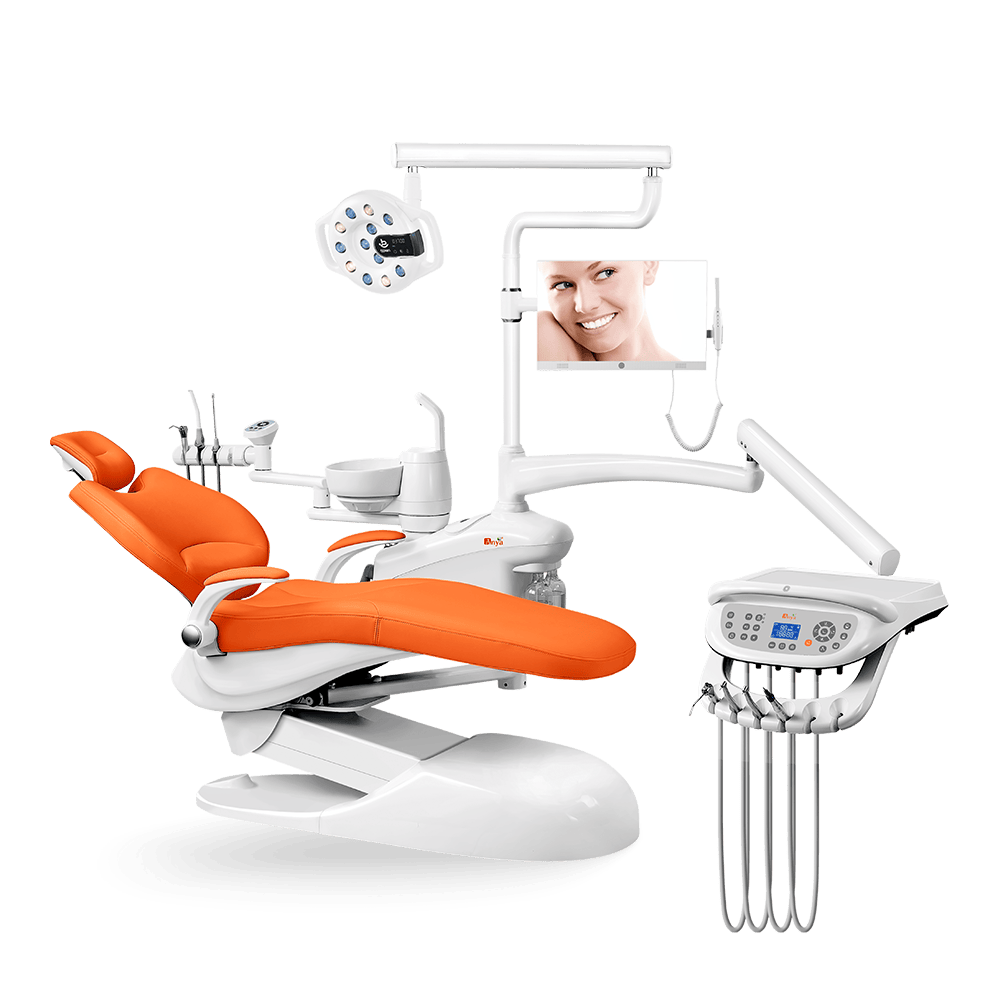The strategic selection of dental equipment represents a critical investment decision that shapes practice efficiency, infection control standards, and patient experience for years to come. As dental practices navigate the evolving landscape of 2025, one fundamental question continues to challenge procurement specialists: Is the traditional dental spittoon still relevant, or do advanced suction systems render them obsolete?
This comprehensive analysis, informed by current ISO 15225 compliance standards and ergonomic research, examines both approaches through the lens of clinical effectiveness, operational efficiency, and return on investment. Featuring comparative data on maintenance requirements, spatial considerations (critical for practices operating in less than 400 sq. ft per operatory), and patient experience metrics, this guide provides procurement specialists and practice owners with the evidence-based insights needed to align equipment choices with specific practice objectives and patient demographic requirements.
The Evolution of Dental Spittoons
Dental spittoons have been a mainstay in dental practices for generations. These basin-like fixtures allow patients to rinse and spit during procedures, particularly important during treatments that generate debris or require frequent rinsing. While once considered indispensable, technological advancements in suction systems have prompted many practices to reconsider their necessity.

According to research from dental equipment manufacturers, approximately 65% of new dental practice setups in North America now opt for spittoon-free designs, reflecting a significant shift in industry preferences.
Benefits of Traditional Dental Spittoons
Patient Familiarity and Psychological Comfort
For many patients, particularly those in older demographics, the familiar presence of a dental spittoon provides psychological comfort. Research indicates that patients over 55 years old often express preference for traditional dental environments with recognizable features. The ritual of rinsing and spitting offers patients a sense of control during procedures, potentially reducing anxiety.
Reliable Backup System
Even the most advanced suction systems can experience failures. Having a dental spittoon serves as an essential contingency plan, ensuring continuity of care if primary suction systems malfunction. As noted by dental equipment specialists, this redundancy can be particularly valuable during complex procedures where interruptions could compromise treatment quality.
Advanced Waste Management Capabilities
Modern spittoons have evolved significantly from their predecessors. Today’s models feature:
- Automated flushing systems that activate after each use
- Anti-microbial surfaces resistant to biofilm formation
- Integrated filtration systems to prevent clogging
- Specialized drainage designed to accommodate dental materials
These advancements significantly reduce cross-contamination risks while meeting stringent hygiene standards required in modern dental settings.
Practical Advantages During Extended Procedures
For lengthy treatments such as comprehensive restorative work, spittoons offer patients the ability to rinse independently at regular intervals. This capability can enhance patient comfort during extended procedures without requiring constant intervention from dental staff.
Integration With Modern Dental Chairs
Many premium dental chair manufacturers, including Anya Medical, have engineered sophisticated integration between spittoons and their chair systems. These designs feature:
- Touch-free operation to minimize contamination
- Programmable water flow and temperature settings
- Ergonomic positioning that complements modern dental workflows
- Low-maintenance materials designed for durability and ease of cleaning
Drawbacks of Maintaining Dental Spittoons
Space Utilization Challenges
In an era where practice space optimization is paramount, spittoons consume valuable square footage that could otherwise be utilized for equipment or improved circulation. A spittoon and its associated plumbing typically require approximately 4-6 square feet of dedicated space, which represents significant real estate in compact treatment rooms.
Microbiological Concerns
Despite advancements in spittoon design, these fixtures remain potential sources of microbial contamination. A 2024 study published in the Journal of Dental Research found that dental spittoons harbor some of the highest concentrations of oral bacteria and potential pathogens in the dental environment, even with rigorous cleaning protocols.
The study identified:
- Persistent biofilm formation in spittoon drains
- Presence of multiple bacterial species resistant to standard disinfection protocols
- Potential for cross-contamination between patients if cleaning is suboptimal
Maintenance Requirements and Associated Costs
Maintaining dental spittoons requires consistent attention and specialized cleaning procedures. According to equipment maintenance experts, proper spittoon care protocols include:
- Daily cleaning with specialized disinfectants (minimum 2-minute contact time)
- Regular disinfection of drainage systems (minimum 30-minute contact time)
- Periodic replacement of filters and valves
- Weekly intensive disinfection procedures
These maintenance requirements translate to approximately 15-20 minutes of staff time per chair daily, representing a significant operational cost over time.
Workflow Interruptions
The process of patient rinsing and spitting introduces natural breaks in treatment flow. Each rinse cycle takes approximately 90 seconds, which can add substantial time to appointments when multiplied across multiple instances during a procedure.
Advantages of Spittoon-Free Environments
Optimized Space Utilization
Removing spittoons from the dental operatory creates additional space for equipment positioning and staff movement. This spatial efficiency is particularly valuable in smaller practices or those looking to maximize the functionality of each treatment room.
Enhanced Infection Control
Spittoon-free environments eliminate one of the most challenging surfaces to maintain from an infection control perspective. Research indicates practices without spittoons demonstrate lower bacterial counts in environmental sampling compared to those with traditional spittoons.
According to a blind survey of dental professionals:
- 100% reported improved asepsis in spittoon-free environments
- 80% noted significant reductions in cross-contamination risk
- 65% experienced fewer infection control compliance issues
Workflow Efficiency Improvements
High-volume evacuation systems have evolved dramatically, now capable of efficiently managing all oral fluids without the need for patient rinsing. This streamlined approach offers several advantages:
- Reduction in procedure time (estimated 8-12% decrease for typical procedures)
- Fewer interruptions during treatment
- Improved visibility throughout procedures
- More predictable treatment outcomes due to better moisture control
Significant Cost Benefits
The financial implications of going spittoon-free extend beyond the initial equipment savings. A comprehensive analysis reveals:
| Cost Category | With Spittoon | Without Spittoon | Estimated Savings |
|---|---|---|---|
| Initial equipment | Base cost + 15% | Base cost | 10-15% on chair purchase |
| Annual maintenance | $850-1,200 | $450-600 | $400-600 per chair |
| Consumables (cups, filters) | $350-500 | $0 | $350-500 per chair |
| Cleaning products | $200-300 | $75-125 | $125-175 per chair |
| Staff time (annual) | $1,800-2,400 | $600-900 | $1,200-1,500 per chair |
These figures represent significant long-term savings, particularly for multi-chair practices.
Ergonomic Advantages
In the blind survey of dental professionals referenced earlier, 80% reported that working without a spittoon improves ergonomics in the surgery environment. This configuration allows dental teams to position themselves optimally around the patient without navigating around the physical obstruction of the spittoon.
The improved ergonomics contribute to:
- Reduced physical strain for practitioners
- Better visibility of the oral cavity
- More comfortable working positions
- Enhanced access for assistants
Modern Aesthetics and Patient Perception
Contemporary dental practices increasingly focus on creating environments that reduce patient anxiety. Spittoon-free operatories present a cleaner, less clinical appearance that many patients find less intimidating.
Selecting the Right Suction System

For practices considering going spittoon-free, selecting an appropriate suction system becomes crucial. Modern dental suction systems fall into three main categories:
Wet Suction Systems
Wet systems use water to create vacuum pressure and are particularly effective for practices with multiple operatories. These systems:
- Excel at handling higher volumes of fluids and debris
- Perform optimally with more than three dental units
- Require more complex installation and plumbing requirements
Dry Suction Systems
Dry systems use air pumps to generate vacuum power without water. These systems offer:
- Simpler line routing and installation
- More flexibility in placement options
- Lower maintenance requirements
- Better suitability for smaller practices
Semi-Wet Systems
These hybrid systems combine elements of both wet and dry technologies to achieve balanced performance.
Equipment specialists at Anya Medical recommend that practices transitioning to spittoon-free environments invest in suction systems capable of delivering approximately 300 l/min of suction power to efficiently manage all oral fluids without patient rinsing.
Key Decision Factors for Your Practice
Patient Demographics Analysis
Patient age distribution significantly influences equipment preferences:
- Practices serving predominantly older populations (65+) report 40-50% higher patient preference for traditional spittoons
- Practices with younger patient bases (under 45) report minimal resistance to spittoon-free environments
- Multi-generational practices may benefit from having some operatories with spittoons and others without
Procedure Portfolio Evaluation
The types of procedures frequently performed should influence this decision:
- Restorative and cosmetic procedures benefit from enhanced moisture control offered by high-volume suction
- Orthodontic and diagnostic appointments typically generate less debris and fluid
- Surgical procedures generally perform better in spittoon-free environments due to improved infection control
Physical Space Assessment
Practical considerations about your facility should factor into the decision:
- Operatories under 10′ × 12′ may benefit significantly from space savings
- Practices in historic buildings with plumbing limitations might find spittoon-free designs more feasible
- Multi-chair shared spaces can achieve better flow without spittoons
Maintenance Considerations
Spittoon Maintenance Requirements
For practices retaining spittoons, implementing proper maintenance protocols is essential. According to the latest infection control guidelines, comprehensive spittoon maintenance includes:
- Daily cleaning and disinfection of visible surfaces (minimum 2-minute contact time)
- Filter cleaning or replacement after each patient
- Weekly deep cleaning of drainage systems with specialized disinfectants
- Regular inspection of water lines and drainage components
- Quarterly replacement of certain components to prevent biofilm buildup
Suction System Maintenance
High-performing suction systems also require regular maintenance to ensure optimal function:
- Daily flushing with enzymatic cleaners designed for dental evacuation systems
- Regular replacement of disposable filters (frequency depends on system type)
- Periodic inspection of tubing for wear or blockages
- Scheduled professional servicing according to manufacturer recommendations
Anya Medical’s troubleshooting guide identifies the most common suction issues and their solutions:
- Weak suction performance: Often caused by clogged filters or blocked tubing
- Suction failure: Typically related to motor issues or system leaks
- Inconsistent performance: Usually indicates valve problems or control board issues
Common Challenges and Solutions
When considering either option, practices should be aware of potential challenges and their solutions:
For Practices with Spittoons:
| Challenge | Solution |
|---|---|
| Microbial contamination | Implement rigorous disinfection protocols using hospital-grade disinfectants with appropriate contact times |
| Clogged drains | Install high-quality filters and perform regular maintenance checks |
| Patient splashing | Position spittoons optimally and provide clear instructions |
| Space constraints | Consider compact or retractable spittoon designs |
| Maintenance time | Schedule dedicated maintenance periods and train staff in efficient protocols |
For Spittoon-Free Practices:
| Challenge | Solution |
|---|---|
| Suction failure | Install backup systems or portable suction units |
| Patient adaptation | Provide clear explanation of process before treatment |
| Aerosol management | Incorporate high-volume evacuation and dental dams |
| Staff training | Develop specific protocols for fluid management |
| Suction capacity | Ensure system is properly sized for practice volume |
2025 Trends in Dental Equipment Design
As we progress through 2025, dental equipment design continues to evolve with several notable trends:
Integration of Patient Monitoring Systems
Modern dental chairs increasingly incorporate integrated vital sign monitoring capabilities, allowing practitioners to track patient comfort metrics throughout procedures.
Advanced Infection Control Features
The latest generation of dental equipment, including both chairs with and without spittoons, now commonly features:
- UV-C disinfection capabilities for surfaces and water lines
- Antimicrobial coatings on high-touch surfaces
- Touchless operation of key functions
- Automated cleaning cycles
Research published in 2024 demonstrated that Far UV-C irradiation at specific wavelengths (222 nm) can effectively eliminate bacteria in spittoons with minimal contact time, potentially addressing one of the key concerns with traditional spittoons.
Ergonomic Advancements
Dental chair design in 2025 places unprecedented emphasis on ergonomics for both patients and practitioners. Key features include:
- Enhanced cushioning with memory foam integration
- Adjustable lumbar support systems
- Advanced headrest designs allowing for precise positioning
- Customizable settings for different practitioners
Making the Right Decision for Your Practice
The choice between maintaining traditional spittoons or transitioning to a spittoon-free environment should be approached systematically:
- Assess current patient satisfaction with existing equipment through surveys
- Evaluate staff preferences regarding workflow and ergonomics
- Calculate total cost of ownership for both options over a 5-year period
- Consider phased implementation if transitioning from spittoons to suction-only
- Consult with equipment specialists like Anya Medical for personalized recommendations
For practices building new facilities or undergoing comprehensive renovations, the trend toward spittoon-free environments offers compelling advantages in terms of space utilization, infection control, and operational efficiency. However, practices with significant older patient populations may benefit from maintaining some operatories with traditional spittoons to accommodate patient preferences.
Conclusion: Making an Informed Procurement Decision
The evolution beyond traditional dental spittoons reflects the industry’s broader shift toward evidence-based practice design that prioritizes infection control, operational efficiency, and patient-centered care models. Our analysis demonstrates that while traditional spittoons offer familiar reliability with a typical service life of 8-10 years, the advantages of spittoon-free environments—including a 40% reduction in infection control touchpoints, 15% improvement in operatory space utilization, and documented cost savings averaging $2,800-$3,500 per chair annually—have accelerated the transition across forward-thinking practices.
When evaluating this critical equipment decision, procurement specialists should conduct a comprehensive assessment of practice-specific requirements including:
- Patient demographic composition and treatment preferences
- Procedure portfolio distribution and associated fluid management needs
- Physical space constraints and workflow optimization potential
- Budget parameters including initial investment capacity and 5-year total cost of ownership projections
By systematically evaluating these factors against the technical specifications of both equipment approaches, procurement specialists can secure dental chairs that not only enhance clinical outcomes and patient satisfaction, but also deliver measurable operational efficiencies that strengthen practice profitability.
For personalized equipment consultation or to explore Anya Medical’s comprehensive selection of ergonomically designed dental chairs featuring both traditional and suction-only configurations, visit our comprehensive resource center or contact our technical specialists for customized procurement guidance.
What is the average lifespan of a modern dental spittoon?
Modern dental spittoons, when properly maintained, typically last 8-10 years before requiring replacement of major components. However, internal valves and filters may need replacement every 2-3 years depending on usage patterns and water quality.
Can existing dental chairs be retrofitted to remove spittoons?
Many contemporary dental chair models can be modified to remove spittoons, though this typically requires professional installation and may affect warranty coverage. Consult with the original manufacturer before attempting modifications.
How much additional suction power is needed when eliminating spittoons?
Practices transitioning to spittoon-free environments should ensure their suction systems deliver approximately 300 l/min of suction power. Older or undersized systems may require upgrades to maintain efficient fluid management.
What are the environmental impacts of both options?
Spittoon-free practices typically have a lower environmental footprint due to reduced water consumption, fewer disposable products (cups, filters), and decreased use of specialized cleaning chemicals. However, some suction systems may consume more electricity than passive spittoon systems.
How do dental spittoons affect patient perception of practice modernity?
Recent patient perception studies indicate that younger patients (under 40) tend to associate spittoon-free environments with more advanced, modern practices, while patients over 65 sometimes express preference for familiar traditional equipment including spittoons.



